
At Cannes Lions, the year’s biggest ad event, you couldn’t escape talk of ChatGPT or Midjourney, even at the yacht parties.
“If you were branding this Cannes, it would be the AI Cannes,” Meta ad executive, Nicola Mendelsohn, told me last week. We were sitting in a glass-walled cabana on the French Riviera, steps away from the shimmering blue Mediterranean Sea.
The Cannes she was referring to isn’t the one you’ve probably heard of — the film festival — but rather Cannes Lions, a similarly swanky festival celebrating advertising instead of cinema.
Every June, thousands of advertising professionals fly in for a bonanza of events. While the festival’s official programming happens at the Palais des Festivals et des Congrès convention center, the real networking happens at beachside business meetings, yacht deck happy hours, and celebrity-studded after-parties. The hot-ticket items this year were Spotify’s invite-only concerts by Florence and the Machine and the Foo Fighters, consulting agency MediaLink’s exclusive Lizzo performance, and TikTok’s end-of-week closing party. On the iHeartMedia yacht, Paris Hilton DJ’ed to a crowd so packed that the party was shut down by the cops.
But it’s not all rosé and champagne: Cannes Lions is a high-stakes hustling opportunity for power brokers at tech companies, ad agencies, and consumer brands — think Nike, Unilever, and Coca-Cola — to check in on multimillion-dollar advertising deals in the second half of the year, and plan new ones for the year ahead.
This year, the festival came on the tail end of a particularly rough time for the tech and advertising world. Digital ad spending slowed down significantly in 2022 compared to years prior, primarily due to rising inflation, an unsteady global economy, and policy changes that made it harder to track users’ browsing habits. That decline contributed to mass layoffs and budget cuts across the media industry. Although conditions are improving a bit, it’s unlikely spending will return to the levels it reached in the early pandemic, and the latest forecasts show continued advertising spending cuts. Given the economic uncertainty, some companies were sending fewer staffers to the festival and cutting back on their presence.
But everyone wants a reason to party and make deals at Cannes Lions. Since advertising funds so many of the free online services we rely on — everything from Facebook to Google to media publishers, including Vox — the industry’s success or failure has massive effects on the average consumer. And in the past year, the advertising industry has desperately needed something to be optimistic about.
Luckily for those looking for a vibe shift, AI had officially entered the chat.
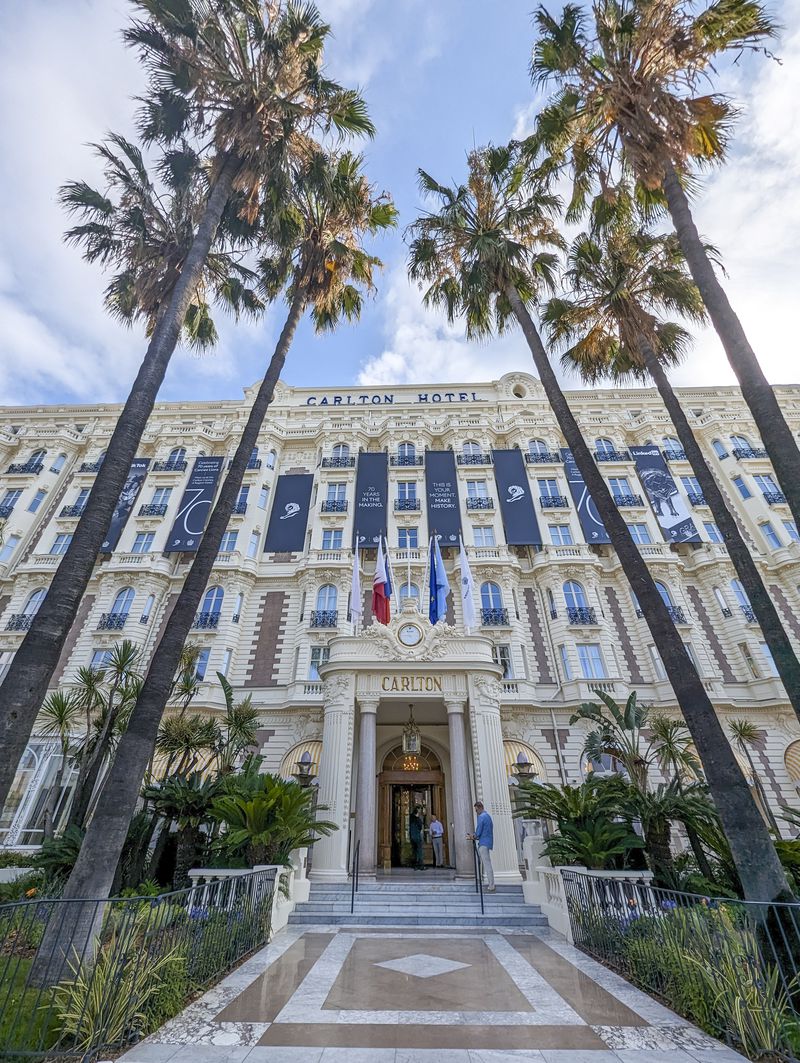
Olivier Anrigo/Getty Images for TikTok
For a week in June, the developing technology was the talk of the beach in the south of France. And while I’m used to nonstop AI hype back home in Silicon Valley, I was not expecting to experience so much of it in Cannes. The streets were plastered with billboards; panels and late-night party chatter were all about AI. Google demoed new tools, Meta announced an upcoming AI assistant that will help advertisers make ads, and Microsoft hosted back-to-back days of AI-themed programming at a beachside venue decorated with images of AI-generated sea creatures.
There was so much AI talk at Cannes Lions this year that, at times, people sounded sick of talking about it. “I’m trying to find the AI superpowered yacht,” I heard one attendee say in jest as he sat on the deck of a luxury vessel, drink in hand.
Jokes and some healthy cynicism aside, the questions everyone seemed to be asking hint at some pretty serious shifts for the media business. Will AI fundamentally change the way we create and consume advertising? Will it be able to lift digital advertising out of its slump? And will it ultimately enhance or replace the human creativity that goes into making ads? Will it save (or destroy) journalism?
AI isn’t new, but it’s the savior the ad industry needs right now
Six years ago, one of the world’s largest advertising agencies, Publicis Groupe, was widely ridiculed for cutting its marketing presence at Cannes so that it could instead invest money into developing a new AI business assistant, called Marcel. Clients and competing ad firms alike dismissed the idea that AI was a worthwhile endeavor for an agency in the business of human creativity.
“At the time, it was panned by everybody, but now it looks pretty smart,” Jem Ripley, the US CEO of digital experience for Publicis, told me in the hotel lobby of the Le Majestic hotel, a hot spot for executive meetings at the conference. To rub it in a little, this year, Publicis launched a hate-to-say “I told you so” billboard campaign around Cannes reminding people how prescient they’d been with developing the AI-powered Marcel platform.
Even before they became hot buzzwords in the industry, automation and AI were powering advertising behind the scenes for years. The two biggest digital advertising platforms, Google and Meta, have long used AI technologies to develop the automated software that determines the price they charge for an ad, who they show the ad to, and even what lines of marketing copy are most effective to use. As users, we don’t see it day-to-day, but that technology is core to many tech companies’ businesses.
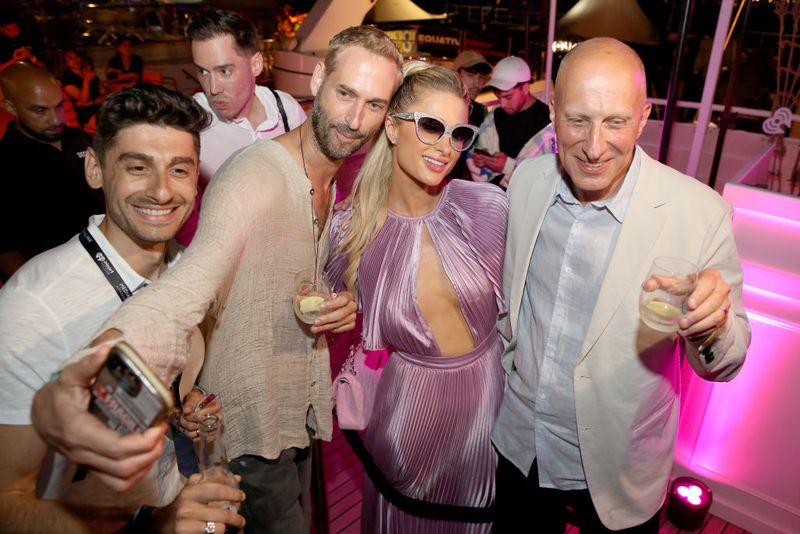
Adam Berry/Getty Images for iHeartMedia
On the consumer side of things, apps like TikTok, Instagram, and YouTube all build AI into the underlying algorithms that decide what content you see, based on what the tech thinks you’re interested in. Think about how TikTok predicts what funny videos you want to see next or how Google ranks your search results; all of it uses AI.
“Everybody wants this to be the year of AI, which I think to some degree it is,” said Blake Chandlee, TikTok’s president of global business solutions, sitting with me in his company’s Cannes outpost inside the swanky Carlton Hotel. “AI is not new. This concept of large language models, it’s been around for years. ... What’s new is ChatGPT and some of the bots and the applications of the technology.”
Just as everyone from artists to writers has learned the value of AI from apps like ChatGPT, Midjourney, and Bard, advertising companies are now realizing what these tools can do for them. That mainstream adoption, combined with the fact that marketers are looking to cut costs in this uncertain economic climate, means that AI is exploding in the ad industry at this moment.
I chatted with everyone from creative directors at the top of the totem pole to rank-and-file copywriters at the festival last week, and almost everyone I spoke with said they had experimented with AI tools in their day-to-day duties. And not because their boss told them to, but because they thought it could save them time writing an email, sketching an ad mockup, or brainstorming an ad concept. Some of them were also worried that it could one day replace their jobs — more on that later — but for now, they were having fun with it.
“I think this year is particularly exciting because it’s sort of like the iceberg breaking through the surface,” said Vidhya Srinivasan, vice president and general manager for Google Ads, in an interview at Google’s beach outpost last Wednesday. “And so I think it’s more personal, and it’s much more tangible for people now. And that brings about a different kind of energy.”
What the AI future of advertising will look like
Standing onstage in a grand theater at the Palais du Festival, Robert Wong, vice president of Google Creative Lab, touted the AI tools his company has starting to put in the hands of advertisers.
In one demonstration, Wong showed how a client can upload a single image of a company logo — a colorful Google “G” icon, in his demo — into Google’s systems and immediately get back a bunch of high-quality 3D images in the same branded style, from a Google dog cartoon to a Google-branded glass of rosé, which was fitting for the venue.
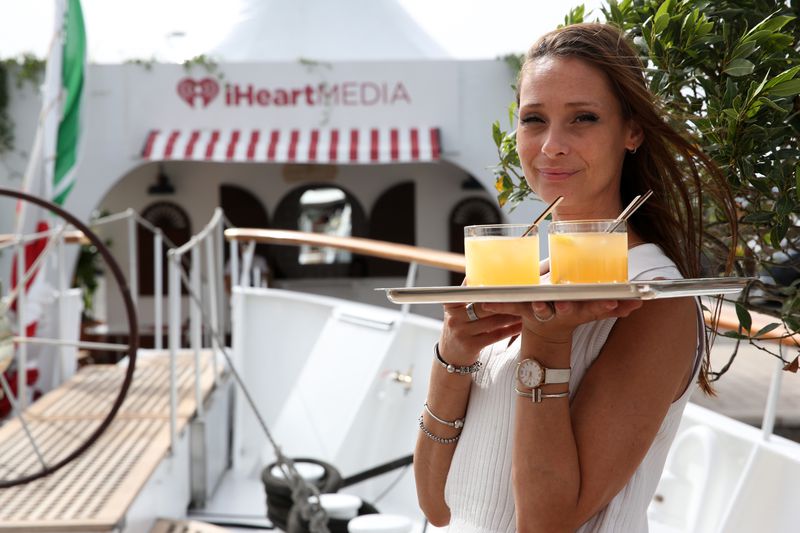
Adam Berry/Getty Images for iHeartMedia
While this quick demo may not seem dramatic compared to some of the splashy generative AI creations we’ve seen lately, like the Pope in a puffer jacket, it was met with “oohs” and “ahhs” from the audience of advertising professionals. That’s because for designers, work like that could take days or weeks. In just a few keystrokes, this new Google tool could give them limitless iterations of a design to experiment with.
“Day-to-day, what I see is designers literally doing sketches in a matter of seconds versus hours. And not one, but like 10,” said Wong in a press conference after the presentation. “And that’s just the beginning. I think we don’t even know what these tools might be in the future.”
Meta also made some AI announcements at the conference, including that it’s working on an AI-powered assistant that can help advertisers create ads. With its so-called AI Sandbox, the company in May released a slew of advertising tools that let advertisers use quick text prompts to come up with AI-generated advertising copy, create different visual backgrounds for their ads, or resize their images. For now, the program is only open to a small group of beta testers, but it’s expanding to more users later this year.
In the long run, the cost savings for brands using generative AI for advertising could be “substantial,” according to Mendelsohn, Meta’s global head of business group.
“It gets better as we train the machines,” she said during our interview at Meta Beach. “And then you think about the reduction not just in cost, but in the impacts on climate. People are not having to travel to be able to do shooting in different ways, or even the reusing of back catalog of ads and things in the past.”
As the tech giants build out tools for their advertising customers, some are already experimenting with open source generative AI software with some impressive results.
For example, some major household brands are already starting to use AI to create high-production-value commercial videos.
In October, Coca-Cola enlisted the AI image creation tool Stable Diffusion to help create a video that was shortlisted for an award at the festival. The ad, called “Coca-Cola Masterpiece,” used AI in addition to traditional methods, like CGI, to create complex animations under a tight deadline. The two-minute spot shows characters popping out of the art in a gallery to toss a classic Coca-Cola bottle in and out of famous paintings, like a Warhol and a van Gogh; the bottle takes on the visual style of the work of art when it enters each picture. It’s an incredibly complex animation process that took only eight weeks, according to visual effects company Electric Theatre Collective, which Coca-Cola commissioned. Without the help of AI, the company told Digiday, it could have taken five times longer.
“We wanted to use technology to get the kind of perfection we needed, the kind of quality we needed, in a short time,” Pratik Thakar, Coca-Cola’s global head of generative AI, said on a panel hosted by Microsoft.
Generative AI holds promise for creating new kinds of audio advertising, too. Spotify, for instance, is exploring whether it can train AI on specific people’s voices so that it can one day generate original audio ads from scratch.
“Can we start to get to a place where — I use Morgan Freeman as a canonical example — if you go and license the IP for his voice, can we use machines to help scale that even further?” said Lee Brown, global head of advertising for Spotify, which has been growing its ad business in recent years. “So is there an opportunity here for us? I think there’s a lot of potential there.”
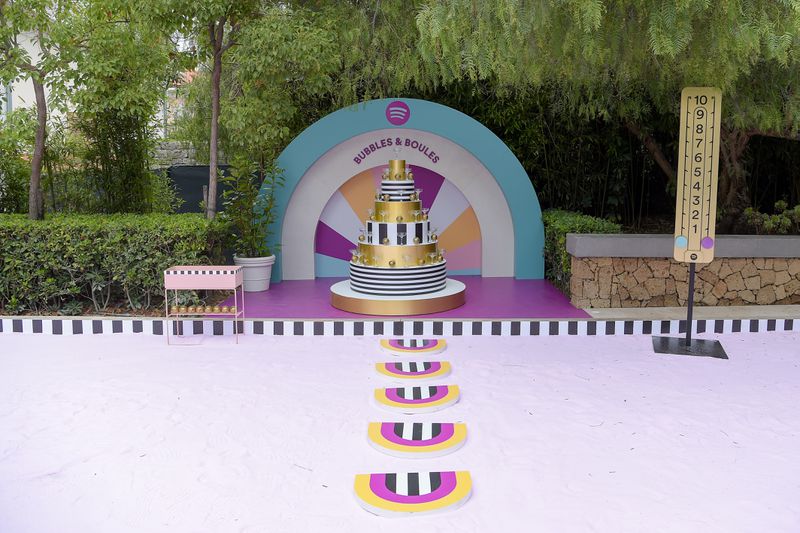
Antony Jones/Getty Images for Spotify
Some of these more sophisticated generative AI tools are still just possibilities for the ad industry at the moment. In the meantime, both Google and Bing are doing something a bit simpler: putting ads inside the conversations people are having with their AI chatbot assistants (Search Generative Experience and BingAI, respectively). The companies say this helps advertisers show users ads that are more relevant to people than what they’d see in a regular search.
The idea is that when you’re researching something like how to plan a trip to Greece, a chatbot would have more context about what you’re looking for — somewhere near the beach that’s kid-friendly in June, for instance — based on a series of follow-up questions you’re having with the bot rather than just through a single search query.
“From a marketer’s point of view, it’s interesting because you have a deeper insight into the user’s intent, because they’re in the conversation where you have more context about what they’re doing,” said Google’s Srinivasan.

In other words, with generative AI search engines, people ask detailed follow-up questions and actually talk to the bots. Jennifer Creegan, general manager of Microsoft’s creative product team, said in a panel last Wednesday that people’s search queries are three times longer in BingAI because of this back and forth. This leads people to click on an advertiser link, she added, and buy something more quickly.
“The best thing about all of this is this is not something I’m showing you in PowerPoint at Cannes to talk about the future,” Creegan said. “This is real. This is in the wild today. People are using it.”
The concerns about AI and ads
Even though new advancements in AI and advertising are real and in the wild, human judgment still needs to play a role in how it all works. Advertisers aren’t ready to fully hand over the reins to the robots to make their ads.
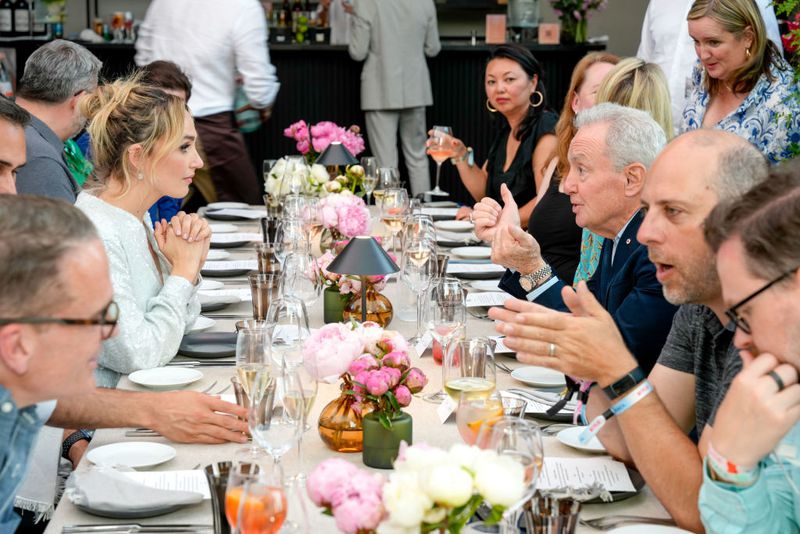
Fred Jagueneau/NBCUniversal via Getty Images
First of all, AI doesn’t replace taste. That means humans still need to review all the draft AI marketing copy or artwork manually. That’s because big companies are still cautious about protecting their brands, and it’s up to the people at the ad firms they hire to make judgment calls.
“At the end of the day, there’s still a healthy concern — I think rightfully so — from our clients about what is going out there,” said Publicis executive Ripley.
Another reservation major brands have around AI is that it could use other people’s creative work that it scrapes from the web, which could open them up to copyright infringement lawsuits. Publicis recently joined C2PA, a standard that watermarks images created by generative AI and can attach proper copyright information to it so that artists get credit for their work.
Advertisers are also worried about brand safety. Given how AI chatbots have a propensity to generate incorrect information, also known as “hallucinations,” or occasionally veer off into emotionally loaded conversations, advertisers need to make sure that the quality of AI-generated ads is up to par.
“For every hour you put into generative AI as a business driver, you need to put an hour into governance,” said Lou Paskalis, a longtime ad executive who’s now chief strategy officer of Ad Fontes Media. “You need to make sure you don’t create a monster.”
All this raises some red flags for the workers in the ad industry. After all, if generative AI can reduce the number of people it takes to, say, produce a video or sketch an animation, the technology could wipe out a swath of jobs, particularly those on the creative side.
Among many advertising executives at Cannes Lions this year, there was an acknowledgment that AI will fundamentally change the kind of work people do. Despite tech companies’ optimism that AI will enhance and not replace human creativity, many said the new technology will get rid of some jobs while creating other new ones. One common refrain from ad execs was that the more creative your work is, the harder it will be to replace.
In the words of Coca-Cola’s Thakar, “Five-out-of-10” level creative advertising work is “free now.” He said, “So we need to figure it out ... if you are really doing nine-out-of-10 work, then definitely there is always a demand.”

Dave Benett/Getty Images for Spotify
Other executives compared AI to the invention of photography, which didn’t entirely replace painters as some thought it would. like Google’s SVP of research, technology, and society, James Manyika.
“AI and art are not at odds,” Manyika said in a keynote introducing Google’s new advertising tools. “AI doesn’t replace human creativity. It enhances, enables, and liberates it.”
Ultimately, it doesn’t seem as though any of the concerns about AI stealing or replacing people’s work are stopping advertisers from jumping on the AI bandwagon. This embrace of the new technology could be a boon to the struggling ad industry. And that, in turn, could benefit consumers who rely on free services propped up by advertising.
But like every other industry AI is impacting, the rise of AI-powered ads will force us to decide what still needs a human touch and what we’re happy to leave to the bots to handle.
----------------------------------------
By: Shirin Ghaffary
Title: The ad industry is going all-in on AI
Sourced From: www.vox.com/technology/2023/6/29/23777560/cannes-lions-google-meta-ai-advertising-2023
Published Date: Thu, 29 Jun 2023 11:00:00 +0000






